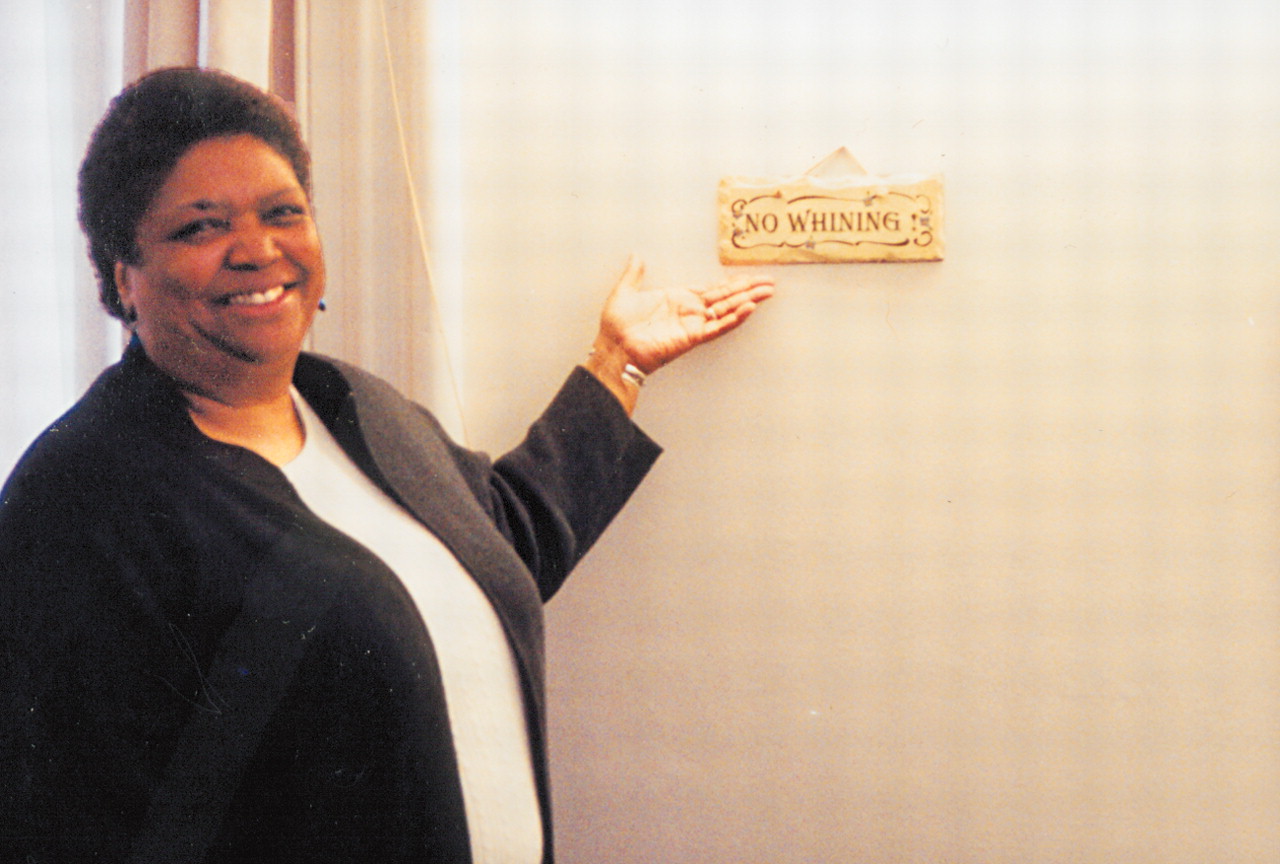“No whining” says the sign on Ernestine Cosby’s wall in her office at Sheppard Pratt Hospital in Towson, Md.
Cosby, M.S.N., R.NCS-P., who is director of the Adult Short Term and Addictions, Crisis Stabilization, and Psychotic Disorders Inpatient Units, said her staff had heard the sentiment so often that one of them gave her the plaque.
From a cheerful office filled with plants, pottery, and homey knickknacks, she daily confronts dilemmas associated with the mental health system’s own Catch 22: Although managed care companies succeeded in shortening hospital stays, outpatient treatment and other support services did not fill the newly developed gaps in care.
Cosby can also speak eloquently about how life has changed for staff and patients as a result of the introduction of managed care economies in the early 1990s.
She first worked at the hospital in 1969 and returned in 1981. Beginning in 1989, when managed care companies started to limit reimbursement for inpatient days, the average length of stay at Sheppard Pratt Hospital decreased from 73.5 days to 33 days in 1992 and stabilized at the current rate of nine days.
Staff had to find new forms of satisfaction in their work as a result of managed care. Cosby said that before the changes, she and the other nurses were able to watch patients improve over a period of several months or even years.
“Now,” she said, “we have only begun to make a connection with the person when he moves off to another set of treatment providers.”
Cosby said, “I constantly remind my staff that if patients don’t return, sometimes it’s because they have gotten better and are functioning outside the hospital.”
In fact, almost immediately, staff focus on how to enable the patient and family to develop a viable plan for treatment and support outside the hospital.
“From day one, we talk to the family about discharge planning, if the patient is to return to the home or if the family is going to be involved,” said Cosby.
Frequently, however, by the time the patient enters the hospital, the family members have been through an extended period of stress and need “to distance themselves” for a while to restore their strength, said Cosby. She encourages them to join support groups operated by the National Alliance for the Mentally Ill or other similar organizations.
“Decent, safe, affordable, supported housing,” answered Cosby, when asked to name the biggest gap in the mental health system. Some patients are homeless when they enter Sheppard Pratt Hospital. In other cases, she said, they might be evicted as a result of hospitalization.
Often, the environment from which they come does not promote recovery. “We don’t want to have to say to them, ‘We’re sending you right back to the place that caused a lot of your problems,’ ” said Cosby.
Staff keep lists of supervised housing placements and monitor them for quality, but competition for slots is keen.
She said that patients from her units have gone as far away as Alabama for supervised housing and treatment placements.
A positive result of the shift to a shorter length of stay is a greater focus on teamwork. Before the advent of managed care, according to Cosby, psychiatrists and other staff members tended to “do their own thing.”
Now, in her unit, the psychiatrist, psychiatric nurse, and social worker see the patient as a team, headed by the psychiatrist. In fact, teamwork looms large in Cosby’s approach to her job. She established a “Morale Team” that is composed of representatives of each discipline from the three units under her supervision and recognizes staff performance and accomplishments.
Cosby said, “Of course, there are many barriers we must overcome. We deal with financial constraints of all kinds in order to get patients the care they need.”
She added, “Creativity is essential. My head is but one. But I am fortunate to have 160 staff members to turn to for other ideas.”
Steven S. Sharfstein, M.D., president and CEO of the Sheppard Pratt Health Care System, said, “Ernestine provides extraordinary clinical leadership in the face of the very difficult challenges posed by short-term inpatient care and high levels of patient acuity.” ▪

